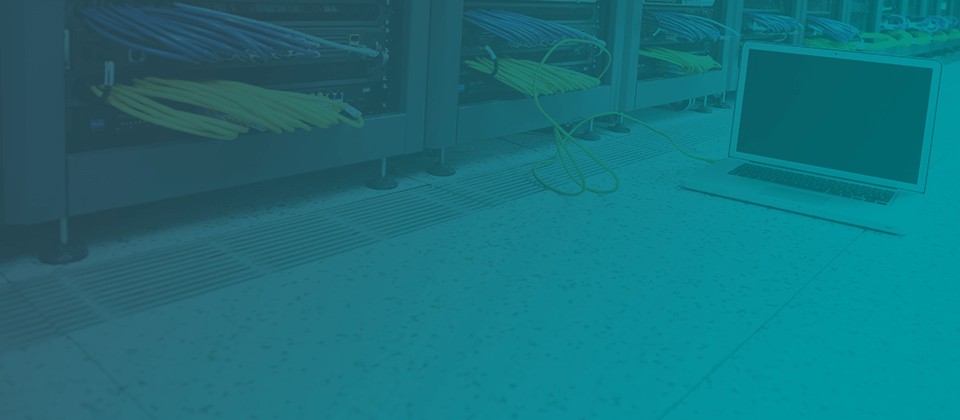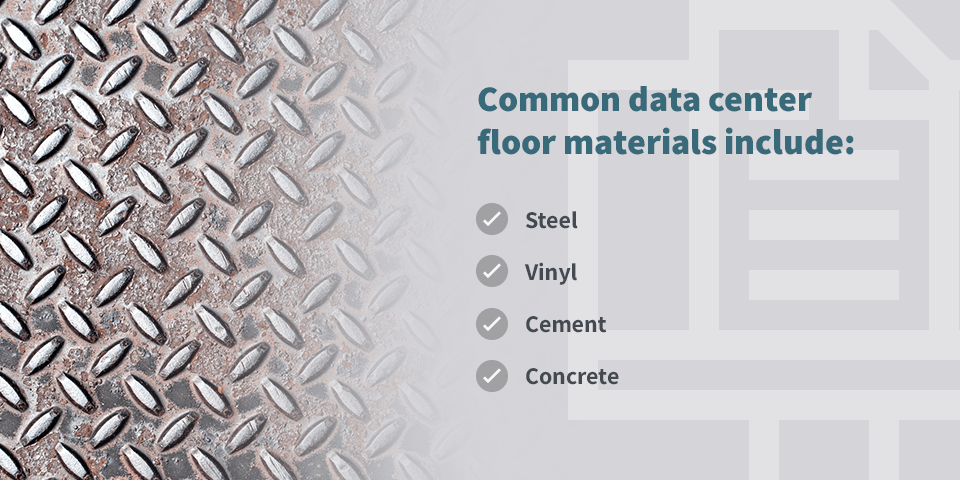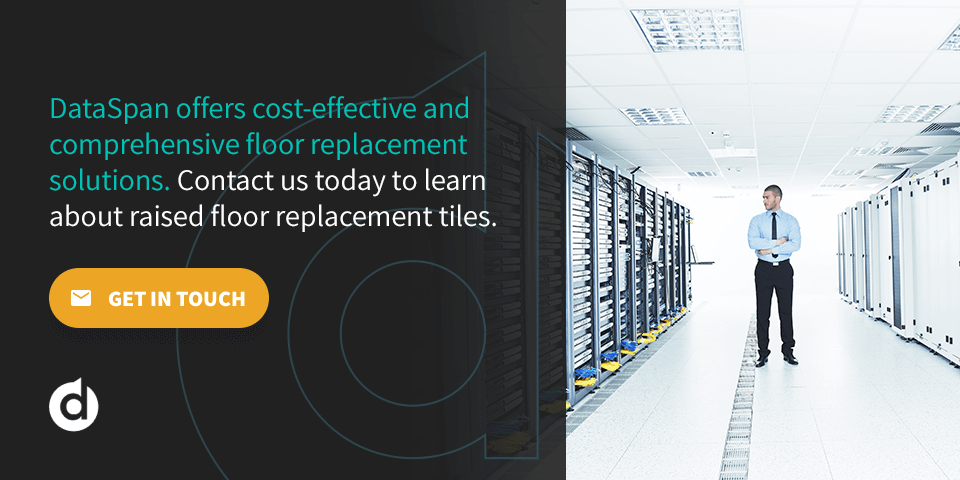Data Center Floor Replacement

Data centers secure data for businesses, allowing for efficient transmission and storage. As data volumes grow, it’s essential for companies to choose secure and well-maintained facilities. Ideal data centers have more than enough computing power, storage space and networking abilities.
Data centers’ physical designs impact their functioning. You need proper facility flooring to maintain a safe and efficient environment. If your floor begins to show signs of wear, it’s important to restore it. A data center floor replacement lets you maintain these high-quality standards.
6 Data Center Floor Replacement Considerations
Successful floor replacements require preparation. You should think about related factors and your facility’s physical dimensions. Floor professionals can help you make the best decisions for your replacement.
Before you begin the process, think about these six data center flooring replacement considerations:
1. Replacement Timing
Raised flooring systems last approximately 20 years. As your floor approaches this age, you should consider developing a replacement plan. After crossing the two-decade mark, they cannot provide the same security and structure for your data center. While some consider just replacing a few panels, it’s most effective to replace the entire floor system.
As your floor ages, you also need to consider its weight-bearing specifications. After many years of use, their weight-bearing capacity can decline. The older your flooring system is, the higher risk of collapse. You might also need to replace the floor sooner than 20 years, depending on the level of wear.
It’s best to consult professionals to make the most informed replacement decision. They can assess your flooring and determine the ideal path forward.
2. Floor System Materials
Data center floor replacements are also an opportunity to evaluate your flooring material. Different materials change the mood and functionality of the space, making them a vital decision. Consider whether you want to replace your floor with the same consistency. If you didn’t prefer the previous tiles, you can choose a new style. Or, you might have recently acquired more hardware and need a new material to support the extra weight.
Before selecting a material, determine your data center’s total weight load and choose the option that accommodates it best. Common data center floor materials include:

- Steel: Steel is one of the strongest options for your floor tiles. It reinforces your floor, creating a strong and stable environment for all of your data hardware. You can also use steel to reinforce other tiles, adding another layer of durability to your facility.
- Vinyl: Vinyl and rubber materials mitigate static electricity, keeping your systems from encountering it. Some vinyl tiles also hold electricity if you prefer that setup for your facility. Vinyl tiles are often a more cost-effective choice than other options.
- Cement: Strong materials like cement can support heavy-duty loads. Cement is cost-effective and quick-drying. It offers immense protection against water and harsh temperatures, making it an excellent option for data centers with tough weather conditions.
- Concrete: Concrete is a versatile and durable choice for your data center. It dispels server heat, keeping your devices at safe temperatures. It’s also simple to clean and provides a smooth appearance.
3. Temperature and Airflow
Proper temperature control is an essential element of data center operations. High equipment loads need proper airflow to stay at safe temperatures. During your floor replacement process, you can select a new layout to optimize airflow. Professionals can recommend the best setup that supports your equipment, maintains proper temperatures and boosts efficiency.
For example, you could implement a hot and cool aisle layout. This system features a raised flooring system that delivers cool air. The model arranges server racks so the cold air intakes and hot air exhausts face one another. The layout helps to conserve energy, reducing your monthly expenditures.
Professionals can also detect any “hot spots” in your data center. Improper airflow patterns and tile placements can cause pockets of warmth, which can negatively impact technology performance. Professionals can place tiles strategically and avoid this common data center issue. They can also provide recommendations for avoiding hot spots in the future, such as ensuring vented areas remain clear.
4. Downtime
Many managers avoid floor replacements for fear of downtime, which is costly for data centers. Issues like cyberattacks and power failures are common causes of data center downtime. But, data center floor replacement does not have to mean disruptions. A professional company like DataSpan can use specialized equipment to efficiently and effectively replace a data center’s raised flooring system without interrupting operations, which ultimately leads to cost savings.
Additionally, an up-to-date flooring system reduces the risk of unplanned downtime due to old flooring. Old flooring translates to energy inefficiency and increases the risk of damage to a data center’s equipment. Consider your floor’s age and the potential risk of continuing operations without an upgrade.
5. Data Center Flooring Maintenance
Once you invest in replacement data center flooring, it needs proper maintenance to remain in good condition. You can lengthen the floor’s lifespan by committing to a regular maintenance and cleaning schedule. Important steps to take include:
- Specialized anti-static cleaning services: Dust and other debris affect a data center’s equipment. Routine specialized anti-static cleaning services will protect your floor and other important infrastructure assets. They also keep staff safe while working in the facility. The best way to eliminate downtime is to stop problems before they start.
- Replacing worn parts: While an entire flooring system can last many years, it is possible some smaller parts may need replacements more frequently. Conduct a visual inspection of the raised flooring, particularly in high-traffic areas, to see if you need to replace any of the panels or parts.
- Professional inspections: While you may be able to recognize and address some minor maintenance issues in your data center’s flooring system, qualified technicians provide more thorough assessments. A professional can recognize all maintenance issues and point out potential problems that could become worse later.
6. Scalability
As the volume of data rises, so will the demands on data centers. When you decide to make an upgrade in your data center, consider options that support current operations and future growth. The modular design of raised flooring systems gives data centers the benefit of scalability. Facilities can add more vented tiles to manage higher heat loads. Additionally, data centers store cables beneath the flooring system, leaving space for overhead cooling systems if necessary. Professional technicians can advise you on scalable options.
Choose DataSpan For Your Data Center Floor Replacement
DataSpan offers cost-effective and comprehensive floor replacement solutions. We have installed and replaced data center floors for almost 50 years, and are committed to finding the best replacement solution for your needs.
Our zero-downtime installations allow you to maintain daily operations. We optimize your infrastructure to ensure a safe environment and boost efficiency. Our dedicated team can assist with:
- Live floor replacements
- Floor inspections
- Floor leveling
- Ramp or step installation
- Support framework inspections or installations
- And more!
Contact us today to learn about raised floor replacement tiles and how we can help upgrade your data center flooring.








